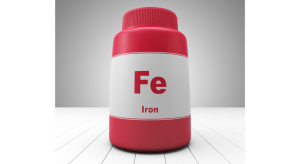Clayton Dalton in Nautilus:
 The story of energy metabolism—the basic engine of life at the cellular level—is one of electrons flowing much like water flows from mountains to the sea. Our cells can make use of this flow by regulating how these electrons travel, and by harvesting energy from them as they do so. The whole set-up is really not so unlike a hydroelectric dam. The sea toward which these electrons flow is oxygen, and for most of life on earth, iron is the river. (Octopuses are strange outliers here—they use copper instead of iron, which makes their blood greenish-blue rather than red). Oxygen is hungry for electrons, making it an ideal destination. The proteins that facilitate the delivery contain tiny cores of iron, which manage the handling of the electrons as they are shuttled toward oxygen.
The story of energy metabolism—the basic engine of life at the cellular level—is one of electrons flowing much like water flows from mountains to the sea. Our cells can make use of this flow by regulating how these electrons travel, and by harvesting energy from them as they do so. The whole set-up is really not so unlike a hydroelectric dam. The sea toward which these electrons flow is oxygen, and for most of life on earth, iron is the river. (Octopuses are strange outliers here—they use copper instead of iron, which makes their blood greenish-blue rather than red). Oxygen is hungry for electrons, making it an ideal destination. The proteins that facilitate the delivery contain tiny cores of iron, which manage the handling of the electrons as they are shuttled toward oxygen.
This is why iron and oxygen are both essential for life. There is a dark side to this cellular idyll, though.
Normal energy metabolism in cells produces low levels of toxic byproducts. One of these byproducts is a derivative of oxygen called superoxide. Luckily, cells contain several enzymes that clean up most of this leaked superoxide almost immediately. They do so by converting it into another intermediary called hydrogen peroxide, which you might have in your medicine cabinet for treating nicks and scrapes. The hydrogen peroxide is then detoxified into water and oxygen. Things can go awry if either superoxide or hydrogen peroxide happen to meet some iron on the way to detoxification. What then happens is a set of chemical reactions (described by Haber-Weiss chemistry and Fenton chemistry) that produce a potent and reactive oxygen derivative known as the hydroxyl radical. This radical—also called a free radical—wreaks havoc on biological molecules everywhere. As the chemists Barry Halliwell and John Gutteridge—who wrote the book on iron biochemistry—put it, “the reactivity of the hydroxyl radicals is so great that, if they are formed in living systems, they will react immediately with whatever biological molecule is in their vicinity, producing secondary radicals of variable reactivity.”
Such is the Faustian bargain that has been struck by life on this planet. Oxygen and iron are essential for the production of energy, but may also conspire to destroy the delicate order of our cells. As the neuroscientist J.R. Connor has said, “life was designed to exist at the very interface between iron sufficiency and deficiency.”
More here.
